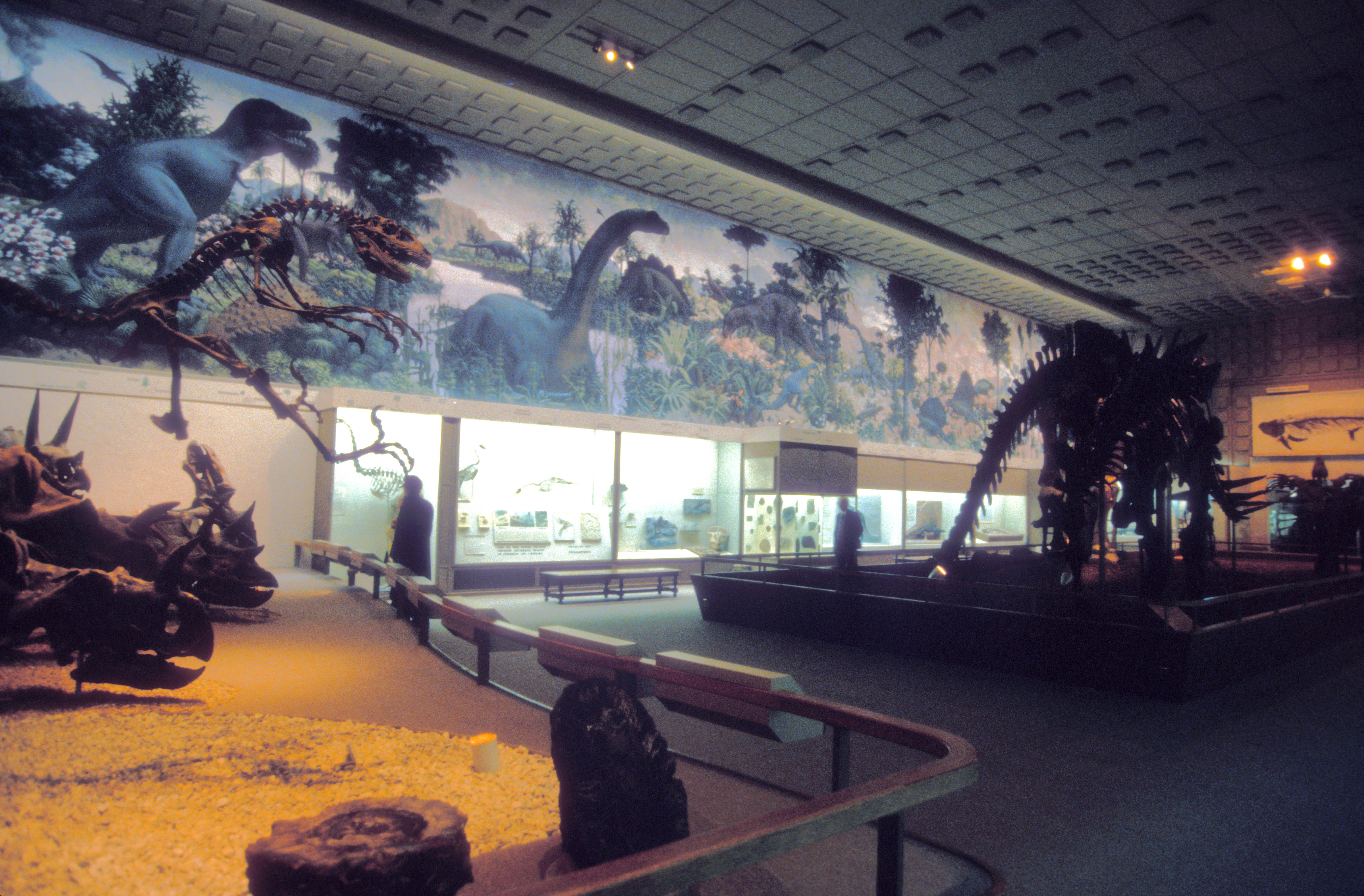|
Thinopus
''Thinopus'' is the name given to a trace fossil ( ichnotaxon) found in late Devonian rocks in Pennsylvania. The only specimen was described by paleontologist Othniel Charles Marsh in a brief note published in 1896, with the only ichnospecies ''Thinopus antiquus''. Marsh interpreted it as the fossil footprints of an early amphibian, making it the oldest evidence for tetrapods (land vertebrates) known at the time. Later research, however, argued that the fossil is better interpreted as the impressions of coprolites (fossilized feces) of fish. This would make ''Thinopus'' the earliest published name of a fish coprolite. Description The only specimen attributed to ''Thinopus'' is a slab containing two concave impressions, a complex impression and part of a second impression. The complex impression is in length and in width, and has a depth of up to . Its margins are sharply defined and slightly overhanging the impression. The complex impression is horseshoe-shaped, with ... [...More Info...] [...Related Items...] OR: [Wikipedia] [Google] [Baidu] |
Devonian
The Devonian ( ) is a geologic period and system of the Paleozoic era, spanning 60.3 million years from the end of the Silurian, million years ago (Mya), to the beginning of the Carboniferous, Mya. It is named after Devon, England, where rocks from this period were first studied. The first significant adaptive radiation of life on dry land occurred during the Devonian. Free-sporing vascular plants began to spread across dry land, forming extensive forests which covered the continents. By the middle of the Devonian, several groups of plants had evolved leaves and true roots, and by the end of the period the first seed-bearing plants appeared. The arthropod groups of myriapods, arachnids and hexapods also became well-established early in this period, after starting their expansion to land at least from the Ordovician period. Fish reached substantial diversity during this time, leading the Devonian to often be dubbed the Age of Fishes. The placoderms began domina ... [...More Info...] [...Related Items...] OR: [Wikipedia] [Google] [Baidu] |
Tetrapod
Tetrapods (; ) are four-limb (anatomy), limbed vertebrate animals constituting the superclass Tetrapoda (). It includes extant taxon, extant and extinct amphibians, sauropsids (reptiles, including dinosaurs and therefore birds) and synapsids (pelycosaurs, extinct therapsids and all extant mammals). Tetrapods evolved from a clade of primitive semiaquatic animals known as the Tetrapodomorpha which, in turn, evolved from ancient lobe-finned fish (sarcopterygians) around 390 million years ago in the Middle Devonian, Middle Devonian period; their forms were transitional between lobe-finned fishes and true four-limbed tetrapods. Limbed vertebrates (tetrapods in the broad sense of the word) are first known from Middle Devonian trackways, and body fossils became common near the end of the Late Devonian but these were all aquatic. The first crown group, crown-tetrapods (last common ancestors of extant tetrapods capable of terrestrial locomotion) appeared by the very early Mississippian ( ... [...More Info...] [...Related Items...] OR: [Wikipedia] [Google] [Baidu] |
Yale Museum
The Peabody Museum of Natural History at Yale University is among the oldest, largest, and most prolific university natural history museums in the world. It was founded by the philanthropist George Peabody in 1866 at the behest of his nephew Othniel Charles Marsh, the early paleontologist. Most known to the public for its Great Hall of Dinosaurs, which includes a mounted juvenile '' Brontosaurus'' and the mural ''The Age of Reptiles,'' it also has permanent exhibits dedicated to human and mammal evolution; wildlife dioramas; Egyptian artifacts; and the birds, minerals and Native Americans of Connecticut. Description The Peabody Museum is located at 170 Whitney Avenue in New Haven, Connecticut, United States, and is operated by almost one hundred staff members. While the original building was demolished in 1917, it moved to its current location in 1925, and has since expanded to occupy the Peabody Museum, the attached Kline Geology Laboratory and the Class of 1954 En ... [...More Info...] [...Related Items...] OR: [Wikipedia] [Google] [Baidu] |
Eusthenopteron
''Eusthenopteron'' (from el, εὖ , 'good', el, σθένος , 'strength', and el, πτερόν 'wing' or 'fin') is a genus of prehistoric sarcopterygian (often called lobe-finned fishes) which has attained an iconic status from its close relationships to tetrapods. Early depictions of this animal show it emerging onto land; however, paleontologists now widely agree that it was a strictly aquatic animal.M. Laurin, F. J. Meunier, D. Germain, and M. Lemoine 2007A microanatomical and histological study of the paired fin skeleton of the Devonian sarcopterygian ''Eusthenopteron foordi'' ''Journal of Paleontology'' 81: 143–153. The genus ''Eusthenopteron'' is known from several species that lived during the Late Devonian period, about 385 million years ago. ''Eusthenopteron'' was first described by J. F. Whiteaves in 1881, as part of a large collection of fishes from Miguasha, Quebec. Some 2,000 ''Eusthenopteron'' specimens have been collected from Miguasha, one of which ... [...More Info...] [...Related Items...] OR: [Wikipedia] [Google] [Baidu] |
Lobe-finned Fish
Sarcopterygii (; ) — sometimes considered synonymous with Crossopterygii () — is a taxon (traditionally a class or subclass) of the bony fishes known as the lobe-finned fishes. The group Tetrapoda, a mostly terrestrial superclass including amphibians, sauropsids ( reptiles, including dinosaurs and therefore birds) and synapsids (with mammals being the only extant group), evolved from certain sarcopterygians; under a cladistic view, tetrapods are themselves considered a subgroup within Sarcopterygii. The known extant non-tetrapod sarcopterygians include two species of coelacanths and six species of lungfishes. Characteristics Early lobe-finned fishes are bony fish with fleshy, lobed, paired fins, which are joined to the body by a single bone. The fins of lobe-finned fishes differ from those of all other fish in that each is borne on a fleshy, lobelike, scaly stalk extending from the body. The scales of sarcopterygians are true scaloids, consisting of lamellar bone su ... [...More Info...] [...Related Items...] OR: [Wikipedia] [Google] [Baidu] |
William King Gregory
William King Gregory (May 19, 1876 – December 29, 1970) was an American zoologist, renowned as a primatologist, paleontologist, and functional and comparative anatomist. He was an expert on mammalian dentition, and a leading contributor to theories of evolution. In addition he was active in presenting his ideas to students and the general public through books and museum exhibits. Early life He was born in Greenwich Village, New York, on May 19, 1876 to George Gregory and Jane King Gregory. He attended Trinity School and then moved onto Columbia University in 1895, initially at the School of Mines but then transferring to Columbia College. He majored in zoology and vertebrate paleontology under Henry Fairfield Osborn. While still an undergraduate he became Osborn's research assistant and soon after married Laura Grace Foote. He received his undergraduate degree from Columbia in 1900, followed by a masters in 1905, and a doctorate in 1910. Academic career He developed an earl ... [...More Info...] [...Related Items...] OR: [Wikipedia] [Google] [Baidu] |
Yale University
Yale University is a Private university, private research university in New Haven, Connecticut. Established in 1701 as the Collegiate School, it is the List of Colonial Colleges, third-oldest institution of higher education in the United States and among the most prestigious in the world. It is a member of the Ivy League. Chartered by the Connecticut Colony, the Collegiate School was established in 1701 by clergy to educate Congregationalism in the United States, Congregational ministers before moving to New Haven in 1716. Originally restricted to theology and sacred languages, the curriculum began to incorporate humanities and sciences by the time of the American Revolution. In the 19th century, the college expanded into graduate and professional instruction, awarding the first Doctor of Philosophy, PhD in the United States in 1861 and organizing as a university in 1887. Yale's faculty and student populations grew after 1890 with rapid expansion of the physical campus and sc ... [...More Info...] [...Related Items...] OR: [Wikipedia] [Google] [Baidu] |
Othenio Abel
Othenio Lothar Franz Anton Louis Abel (June 20, 1875 – July 4, 1946) was an Austrian paleontologist and evolutionary biologist. Together with Louis Dollo, he was the founder of "paleobiology" and studied the life and environment of fossilized organisms. Life Abel was born in Vienna, the son of the architect Lothar Abel. Abel earned a PhD, after studying both law and science, from the University of Vienna. He remained there as an assistant to Alpine geologist Eduard Suess, before being appointed a professor of paleontology. Three years later, he finished his habilitation thesis as a paleontologist at the University of Vienna. From 1900 to 1907, he worked at the Geologische Reichsanstalt. In 1907, Abel became an extraordinary professor in Vienna, and from 1917 to 1934 he was a regular professor of paleontology in Vienna. As such, he led several expeditions that gave him broad recognition, such as the Pikermi-expedition to Greece in 1912, an American expedition (1925) and one to ... [...More Info...] [...Related Items...] OR: [Wikipedia] [Google] [Baidu] |
Silurian
The Silurian ( ) is a geologic period and system spanning 24.6 million years from the end of the Ordovician Period, at million years ago (Mya), to the beginning of the Devonian Period, Mya. The Silurian is the shortest period of the Paleozoic Era. As with other geologic periods, the rock beds that define the period's start and end are well identified, but the exact dates are uncertain by a few million years. The base of the Silurian is set at a series of major Ordovician–Silurian extinction events when up to 60% of marine genera were wiped out. One important event in this period was the initial establishment of terrestrial life in what is known as the Silurian-Devonian Terrestrial Revolution: vascular plants emerged from more primitive land plants, dikaryan fungi started expanding and diversifying along with glomeromycotan fungi, and three groups of arthropods ( myriapods, arachnids and hexapods) became fully terrestrialized. A significant evolutionary milestone d ... [...More Info...] [...Related Items...] OR: [Wikipedia] [Google] [Baidu] |
Terrestrial Locomotion
Terrestrial locomotion has evolved as animals adapted from aquatic to terrestrial environments. Locomotion on land raises different problems than that in water, with reduced friction being replaced by the increased effects of gravity. As viewed from evolutionary taxonomy, there are three basic forms of animal locomotion in the terrestrial environment: * legged – moving by using appendages * limbless locomotion – moving without legs, primarily using the body itself as a propulsive structure. * rolling – rotating the body over the substrate Some terrains and terrestrial surfaces permit or demand alternative locomotive styles. A sliding component to locomotion becomes possible on slippery surfaces (such as ice and snow), where location is aided by potential energy, or on loose surfaces (such as sand or scree), where friction is low but purchase (traction) is difficult. Humans, especially, have adapted to sliding over terrestrial snowpack and terrestrial ice by means of ... [...More Info...] [...Related Items...] OR: [Wikipedia] [Google] [Baidu] |




